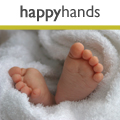Baby
Good Advice
Safety advice for bonfire night
Fire safety is always rightly top of the agenda around the start of November as families enjoy the magic of Bonfire night with children. However over half of all fireworks related injuries happen to children, so it’s worth spending time reading through these do’s and don’ts to ensure that everyone, especially children, stays safe and enjoys their Bonfire night.
Firstly, sparklers get extremely hot and shouldn’t be given to under fives. It may sound curmudgeonly, and might result in the odd miffed toddler, but sparklers, whilst fun, get five times hotter than cooking fat. Older children should use gloves when using them and it’s key to keep a close eye on any child with one lit.
When buying fireworks it is essential that they are bought from a reputable source and they should always conform to British safety standards. If your fireworks don’t have a BS 7114 code on them, they aren’t safe. Before you buy any fireworks, it is always a good idea to read the box carefully and check that they are suitable for the area that you intend to set them off in.
It is always advisable to have one person in charge of the fireworks when setting them off – preferably someone equipped with a torch, a bucket of water, gloves, eye protection and a bucket of soft earth to put fireworks in. In the interest of neighbourhood relations we think it’s always a very good idea to warn neighbours when you intend to set off fireworks, so they know to keep any pets indoors.
And one you have enjoyed your visual display, it is key to soak partially fired or misfired fireworks in a bucket of water and make sure to never place fireworks, even those seemingly spent, on a bonfire.
In the unfortunate event of anyone receiving a burn or scold follow these treatment steps.
- Cool burn with cold running water for at least ten minutes. If cold water is not available, use another cold, harmless liquid, such as milk.
- Get medical help for any burn or scald which is larger than a 50p coin.
- Remember to keep calm and give lots of comfort and reassurance to the child.
- DO NOT remove burnt clothing which has stuck to the skin. Burnt clothing is sterile and will protect the wound.
- Remove carefully any jewelry, belts, restrictive clothing or footwear (that is not stuck to the skin) from the injured area before it begins to swell.
- Cover the burn with a clean, dry, non-fluffy dressing and secure loosely. A plastic bag or piece of cling film is ideal.
- DO NOT put butter oil or any sort of grease or lotion on a burn or scald – these can cause further damage and increase the risk of infection
For more information about fire safety www.capt.org or www.rospa.com
The above is not a substitute for professional first aid training. For details of paediatric first aid courses in your area please call Safe and Sound on 020 8445 8998 or go to www.safeandsound.uk.net
We also found this video produced by Tesco's Baby Club useful in the event that your child has suffered a burn.
Related Articles
Celebrating Bonfire night in London
First Aid training - Why knowing what to do is so important
Preventing and treating poisining with First Aid For Life
Firework Advice and First Aid tips should something go wrong
Help Pee Wee Karate founder end violence towards girls and women
Helmets - can they really save lives?
What we all should know about Asthma
Why first aid skills are important for older children and teenagers
Vital first aid tips for Fireworks
What to do when a child is choking
Halloween and Bonfire Night First Aid Tips
Help Pee Wee Karate founder end violence towards girls and women
Related Products
Have Your Say
Be the first person to comment on this article, just post a comment below.





In order to post a comment you need to be a member. Join Now | Sign in